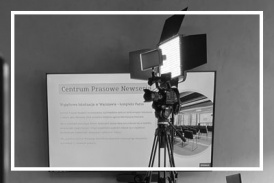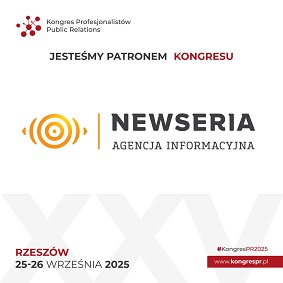Optimizing Website Speed and Performance to Strengthen SEO and Advertising Results
Brett Thomas, founder of Rhino Web Studios in New Orleans, Louisiana, emphasizes the connection between site speed and digital marketing performance.
“Search engines reward fast-loading websites with better visibility. Slow performance increases bounce rates, reduces conversions, and drives up ad costs. Addressing speed is not optional—it’s fundamental,” said Thomas.
Core Web Vitals and Search Visibility
In 2021, Google officially integrated Core Web Vitals into its ranking algorithm. These metrics measure the user experience by tracking loading performance (Largest Contentful Paint), interactivity (First Input Delay), and visual stability (Cumulative Layout Shift). Websites that fail to meet these benchmarks risk lower organic visibility and poorer ad performance, regardless of content quality.
Loading delays of even one second can reduce conversion rates by up to 20%, according to industry data. High bounce rates signal to search engines that users are not finding the experience valuable, which can diminish rankings and increase pay-per-click (PPC) costs due to lower quality scores.
The Impact on Paid Advertising
For businesses running digital ad campaigns—especially on platforms like Google Ads and Facebook Ads—website performance influences more than click-through rates. A slow-loading landing page causes friction in the user journey, leading to lost leads and increased cost-per-conversion.
Ad platforms evaluate landing page experience as part of their overall quality scoring system. Low-performing sites may face higher bid prices and lower ad placements. This makes technical optimization a key factor in campaign strategy.
Reducing page load time, minimizing server response delays, and optimizing media files directly support better ad results. Fast-loading pages improve user satisfaction and keep prospects engaged longer, improving the odds of meaningful conversions.
Key Factors Slowing Down Websites
Several common issues contribute to poor site speed:
Unoptimized Images: Large image files often account for the bulk of slow loading times. Compressing and resizing media appropriately can yield immediate improvements.
Excessive Plugins or Scripts: Third-party scripts, especially those related to analytics, social media, or animations, may delay content rendering.
Lack of Caching: Without proper caching rules, the browser has to reload resources every time a user revisits the site.
Bloated Themes and Code: Poorly coded themes or unnecessary CSS/JavaScript files increase download time and processing overhead.
Inadequate Hosting: Shared or low-performance servers often struggle to deliver fast load times under traffic pressure.
Addressing these elements requires a mix of front-end and back-end adjustments to bring websites into alignment with modern speed expectations.
Technical Solutions for Better Performance
Several proven strategies improve speed and performance:
Image Optimization: Using next-gen formats like WebP and compressing large media files.
Minification of Code: Reducing the size of CSS, JavaScript, and HTML files to eliminate unnecessary characters and spaces.
Content Delivery Networks (CDNs): Distributing content across global servers to reduce physical distance between users and website data.
Lazy Loading: Loading content only as needed, rather than all at once, especially for images and embedded media.
Server-Side Improvements: Upgrading hosting environments, implementing object caching, and using newer PHP versions or HTTP/3 protocols.
Implementing these solutions can have a measurable impact on user experience and search engine performance.
Aligning SEO and Advertising Objectives
Modern digital strategies depend on alignment between organic and paid efforts. SEO focuses on long-term visibility, while advertising delivers immediate traffic. Both benefit from a high-performing website.
Optimized speed supports deeper engagement, better time on site, and reduced bounce rates—all metrics that reinforce campaign objectives across marketing channels. It also reduces friction in the buyer’s journey, encouraging conversions from both organic and paid traffic sources.
Web performance is no longer a backend concern—it is central to marketing execution.
Morgan Thomas
Rhino Digital, LLC
+1 504-875-5036
email us here
Visit us on social media:
Facebook
Legal Disclaimer:
EIN Presswire provides this news content "as is" without warranty of any kind. We do not accept any responsibility or liability for the accuracy, content, images, videos, licenses, completeness, legality, or reliability of the information contained in this article. If you have any complaints or copyright issues related to this article, kindly contact the author above.
Royal Cyber Launches AgenticAI – The Autonomous Framework Powering the Future of Intelligent Digital Commerce
The Dairy Alliance Celebrates National Ice Cream Day
Tulua Aesthetics Partners with DoctorLogic to Achieve 10X Online Visibility in Just 8 Months
Kalendarium
Więcej ważnych informacji
 Jedynka Newserii
Jedynka Newserii

 Jedynka Newserii
Jedynka Newserii

Bankowość

Banki spółdzielcze coraz ważniejsze dla finansowania gospodarki. Współpraca z BGK ma pobudzić lokalne inwestycje
Banki spółdzielcze w coraz większym stopniu odpowiadają za finansowanie rozwoju gospodarki. Ich udział w ostatnich latach wzrósł, a kondycja sektora się poprawiła. Bank Gospodarstwa Krajowego chce wzmocnić współpracę z bankami spółdzielczymi na rzecz finansowania lokalnego rozwoju. To jeden z elementów nowej strategii BGK na lata 2025–2030. Narzędziami, które do tego służą, są gwarancje BGK.
Prawo
Przedstawienie projektu przez KE oznacza początek dyskusji nad nowym siedmioletnim budżetem. W PE zdania co do jego kształtu są podzielone

16 lipca br. Komisja Europejska przedstawi propozycję wieloletnich ram finansowych. To będzie dopiero początek wytężonych prac nad kształtem nowego budżetu i trudnych dyskusji na ten temat, bo wśród państw członkowskich, ale też w różnych frakcjach parlamentarnych jest wiele różnic dotyczących szczegółowych rozwiązań. Chodzi m.in. o podejście do wspólnego zadłużania się, nowych źródeł zasobów UE czy rozszerzania kompetencji UE.
Konsument
Konflikty i żywioły wpływają na wakacyjne plany Polaków. Bezpieczeństwo coraz ważniejsze przy wyborze letniej destynacji

Sytuacja geopolityczna i pogodowa sprawia, że Polacy coraz rozważniej podchodzą do wyboru wakacyjnych kierunków. Choć nieprzewidziane zdarzenia mogą się zdarzyć w każdym miejscu na świecie, to minimalizowaniu ryzyka służą m.in. sprawdzanie ostrzeżeń dla podróżnych na stronach Ministerstwa Spraw Zagranicznych, rejestracja w systemie Odyseusz, który zadziała w razie kryzysowej sytuacji, a także wyjazd z ubezpieczeniem turystycznym. Koszty ewentualnego leczenia czy repatriacji znacząco przewyższają bowiem wysokość składki.
Partner serwisu
Szkolenia

Akademia Newserii
Akademia Newserii to projekt, w ramach którego najlepsi polscy dziennikarze biznesowi, giełdowi oraz lifestylowi, a także szkoleniowcy z wieloletnim doświadczeniem dzielą się swoją wiedzą nt. pracy z mediami.









.gif)

 |
| |
| |
|